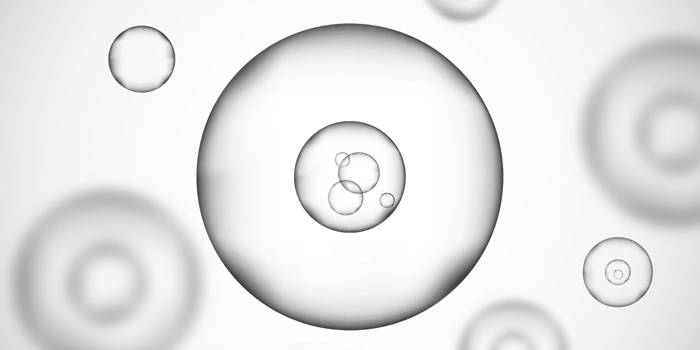
For every Joe Rogan Experience listener out there, the topic of stem cells won’t be unfamiliar. One might presume that they’re these wonder cells that are still not regulated in North America, but if you have enough money, you can go to Tijuana, get some injections and when you get back home, your almost fully torn rotator cuff will be back to brand new.
That is, of course, a simplified description and not a word-for-word description of what Joe says. Due to his podcast, the topic of stem cells has gotten some mainstream light over the past couple of years. And although I’m not a biochemist or stem cell researcher, I wanted to clarify what stem cells are, how they work, and the different roadblocks encountered in furthering their research and development.
What is a Stem Cell?
A stem cell is a cell that can self-renew itself and change into more than just one cell type. A torn rotator cuff with several damaged cells injected with some stem cells can theoretically divide into several new rotator cuff cells, allowing for what is essentially a new, well-functioning rotator cuff. However, there is far more to discuss regarding stem cells. Their ease of usage is unfortunately not what some people might be led to believe.
Types of Stem Cells
Firstly, there are different types of stem cells. Each differs on where they come from and their respective ‘potency.’ The three that I will mention today are embryonic, somatic, and induced pluripotent.
Embryonic Stem Cells
The most discussed type, mostly because of ethical and political reasons, is embryonic stem cells. The stem cells come from embryos. Embryonic stem cells are called pluripotent. A pluripotent embryonic cell does not yet have a definite function or role, and it can take the form of any other type of cell in the body. For this reason, embryonic stem cells have a high potential for disease and injury recovery. 1
Somatic Stem Cells
Somatic stem cells can be derived from almost any part of an adult human’s body. They’ve been found in skin, blood, teeth, and even urine). They are called multipotent, meaning that a stem cell from blood can only differentiate into other types of blood cells (white blood cells, red blood cells, platelets, etc.) and the same with skin, liver cells, etc. For this reason, somatic blood cells do not have the same potential as embryonic stem cells. 2
Induced Pluripotent Stem Cells
Induced pluripotent stem cells are from somatic stem cells and reversed into a pluripotent state. This was discovered by a researcher named Shinya Yamanaka, for which he rightfully won a Nobel prize in 2012. The importance of this discovery was great because by reversing an adult stem cell, scientists and researchers can avoid the ethical, moral, and political roadblocks associated with embryonic stem cells. 3
How Stem Cells Work and Their Medical Complications
A pluripotent stem cell, as described earlier, can self-renew. To self-renew means that one cell can divide into two, two can divide into four, and so forth. It can also differentiate by turning into any type of cell (a blood cell, a muscle cell, a skin cell, etc.).
MORE FROM NOEL: The Post-Surgical Knee: The Range of Motion Rebuild
Because of this self-renewal and differentiation, stem cells injected into an injured site have the potential to create the new cells needed to induce a full recovery. There are, however, potential complications when performing such a procedure.
3 Major Medical Complications
- Coaxing a stem cell to do exactly what you want it to do is a difficult task. It’s not just a matter of injecting stem cells into the injured site and the cell becomes exactly what you wanted it to be. The procedure of turning a pluripotent stem cell into any type of desired cell is extremely complicated and researchers/scientists around the world have spent entire careers trying to figure it out. 4
- Stem cells have a longer life span than ordinary cells. The longer the life span, the higher the possibility of a cell becoming mutated. When a mutated cell loses control and begins to self-renew, this can be problematic. For any readers out there familiar with the biology of how cancer cells work, this is the basis of how a tumor starts. Cancer is caused by an uncontrolled division of mutated cells in the body. Used incorrectly and in certain contexts, stem cells have the potential for either starting a cancer or accelerating its progress. 4
- When using pluripotent stem cells, the body can elicit a very strong immune response to fight off what it sees as an unfamiliar, foreign body which would reduce the effectiveness of the therapy. To combat this, researchers have successfully used immunosuppressants which weakens the immune system leading to potential infection/diseases etc. 4
These complications are not even yet fully understood, as the research performed within North America is limited. Along with that, researchers and scientists aren’t even fully aware of what eventual complications will come along as the research progresses.
Although stem cell therapy is a romantic idea, getting to a point where their use is risk-free is still years away. For this reason, companies that are marketing stem cell therapy should be looked at with a very skeptical eye.
A Note on Ethics
As I briefly mentioned earlier in the description of induced pluripotent stem cells, there can be many ethical, moral and political roadblocks when researching embryonic stem cells. Embryonic stem cells are generally retrieved from an embryo that has been produced in vitro—outside of the woman’s body (she might choose to do this for a few different reasons).
When attempting to derive the stem cells from the embryo, there are different ethical considerations to think about—consent from the donor to when in the fetus’ life should the stem cell be derived, etc. In addition, many politicians have made statements and legislations regarding stem cells. For the sake of this article, I will not be going into this discussion. There are some fascinating viewpoints and discussions to be read by the interested reader.
Conclusion
Stem cell research is a fascinating area of biomedicine. Science is just beginning to scratch the surface on how far their potential can go. In the future, we could be looking at spinal cord injuries being fully recovered and best practices for Alzheimer's and diabetes. We could even see fully regenerated limbs in the distant future if science can learn how to harness the power of totipotent (the more potent version of pluripotent) stem cells.
There are still considerable political roadblocks to overcome before this area of biomedicine can even be researched, let alone figured out. In 2001, George Bush stated that "at its core, this issue forces us to confront fundamental questions about the beginnings of life and the ends of science." He then banned all federal funding toward stem cell research as his thoughts were that stem cell technology required the destruction of human life.
Although the industry has come far in the past 19 years, from developing the induced pluripotent cell to creating legislative loopholes to progress further, their development is still hamstrung by these opinions. The concept is still quite new in its development. For this reason, the opinions of Joe Rogan and other celebrities that have endorsed the use of stem cells should be taken with a grain of salt. The well-marketed stem cell therapy industry has created lots of room for the unknowing customer to be exploited. I hope we get to a point where healthcare providers can provide safe and risk-free stem cell therapy. Heavy skepticism should be used when discussing stem cell treatment.
References
- Keller, G.M., 1995. In vitro differentiation of embryonic stem cells. Current opinion in cell biology, 7(6), pp.862-869. https://www.cell.com/cell-stem-cell/fulltext/S1934-5909(10)00403-0
- Sauvageau, M. and Sauvageau, G., 2010. Polycomb group proteins: multi-faceted regulators of somatic stem cells and cancer. Cell stem cell, 7(3), pp.299-313.
- Yu, J., Vodyanik, M.A., Smuga-Otto, K., Antosiewicz-Bourget, J., Frane, J.L., Tian, S., Nie, J., Jonsdottir, G.A., Ruotti, V., Stewart, R. and Slukvin, I.I., 2007. Induced pluripotent stem cell lines derived from human somatic cells. science, 318(5858), pp.1917-1920.
- Herberts, C.A., Kwa, M.S. and Hermsen, H.P., 2011. Risk factors in the development of stem cell therapy. Journal of translational medicine, 9(1), p.29. https://translational-medicine.biomedcentral.com/articles/10.1186/1479-5876-9-29
Header image credit: ket4up © 123rf.com
Noel FitzGibbon is a former international underage-level weightlifter who has represented Ireland at the European level and has achieved a world ranking with the IWF. He has coached in strength and conditioning and weightlifting/powerlifting at a provincial, national and international level. He is currently working as a personal trainer and a strength and conditioning coach out of Calgary, Canada.










